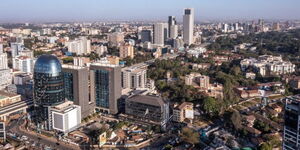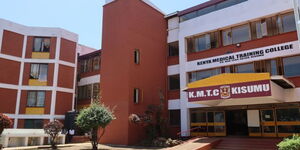The national government and Nairobi City County are set to partner in an ambitious project to transform the street outside the Kenya Cinema building into a film district.
The development was revealed by Youth Affairs and Creative Economy Principal Secretary Fikirini Jacob, who noted that the move would be aimed at improving the vibrant creative sector.
Jacobs announced on Thursday, October 30, at the Pwani Innovation Week, but did not reveal the finer details of the project.
“The street outside Kenya Cinema is a street which, in consultation with the county government of Nairobi, we are converting to be a film district,” he said.
"We are doing this so that all the energy that we see in young people, where they create content and photography over the weekends, can be channeled in there,” Jacobs added.
The Kenya Cinema building, located along Moi Avenue and adjacent to Harambee Avenue, holds a deep and symbolic place in Kenya’s cinema and entertainment history. For decades, it was one of the most important cultural landmarks in the city, shaping Nairobi’s moviegoing habits, creative expression, and urban social life.
It was established in the 1950s during the colonial era by the East African branch of the British firm, 20th Century Fox (later Fox Theatres). It was built as a premier film exhibition venue for European settlers and colonial administrators, and was one of the few high-end cinemas in East Africa at the time.
Its golden age, from the 1960s to the 1980s, made it the heartbeat of Kenya’s film culture, hosting major film premieres, both Hollywood and local productions.
During its peak, the cinema featured state-of-the-art sound and projection systems for its time, making it the most advanced and comfortable cinema in the country.
However, from the late 1990s onward, Kenya Cinema began to lose its dominance. This was due to several factors, such as the rise of DVD players and home video, piracy and cheaper entertainment alternatives, the city’s decentralisation, where audiences moved toward suburban malls with new multiplex cinemas, as well as economic instability and urban insecurity in the CBD.
By transforming the street around it to be a film district, it will be recognised as a center for film and media production, distribution, and related creative industries.
This will make it an urban zone dedicated to the film and audio-visual sector, often blending production spaces like studios with cultural venues like cinemas, galleries, and theatres, together with supporting infrastructure like offices, training centers, post-production facilities, and cafés.
Examples of film districts in the world are Hollywood (Los Angeles, United States), Film City Mumbai (India), and Pinewood Studios Zone (London, United Kingdom).
In terms of urban planning, city planners create or promote film districts to boost creative economy growth, revitalize underused urban areas, attract foreign investment and film tourism, promote local storytelling and talent development, and integrate arts and culture into urban identity.












